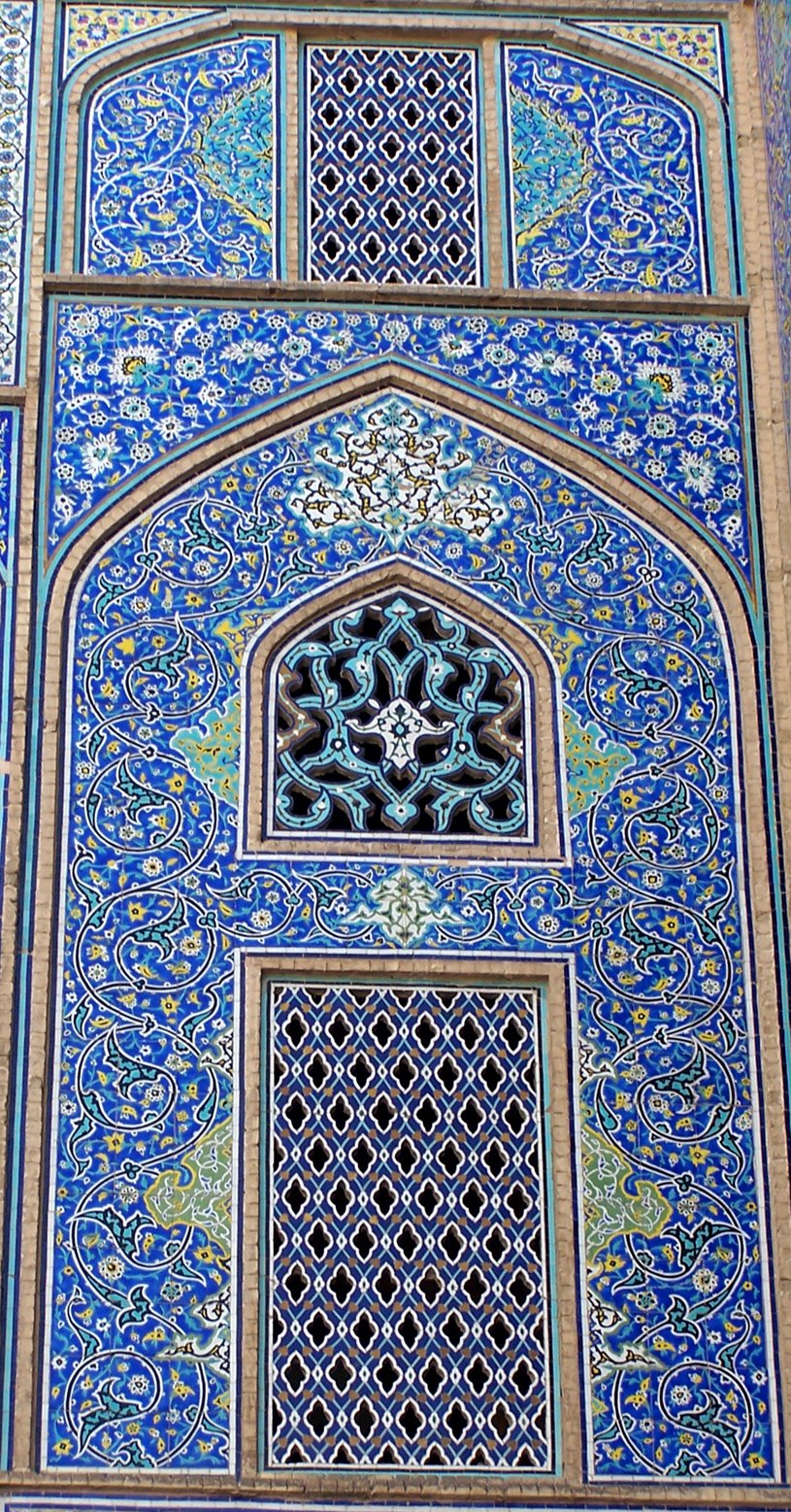#5089. Azure Façade: A Masterpiece of Islamic Ceramic Mosaic
Before us is a magnificent example of Islamic architecture, presumably a fragment of a mosque or madrasah façade in the traditional Persian or Central Asian style. The dominant element of the composition is exquisite mosaic made of glazed ceramic tiles, executed predominantly in blue and turquoise hues.
The façade is organized according to the principle of hierarchical symmetry with a central niche in the form of a pointed arch (iwan), framed by decorative panels. The upper part contains three sections: a central one with a geometric pattern and side panels with floral and vegetal ornaments (islimi). In the center of the façade is an elegant decorative window with an openwork lattice (panjara), executed in the technique of carved mosaic.
Particularly noteworthy is the craftsmanship of the glazed tiles and the virtuoso execution of arabesques — plant tendrils intertwining in complex patterns on a blue background. The lower part of the façade is adorned with a panel featuring a geometric ornament in the form of a diamond-shaped lattice (girih). The color palette is based on the contrast of rich cobalt blue with turquoise, white, and golden accents, which is a characteristic feature of Islamic art in this region.
The mosaic execution technique involves the use of traditional methods, where each element of the pattern is cut separately and then assembled into a unified composition. This type of façade decoration not only serves an aesthetic function but also reflects the deep symbolic and cosmological concepts of Islamic philosophy, where the continuity of the pattern symbolizes the infinity of divine presence.
